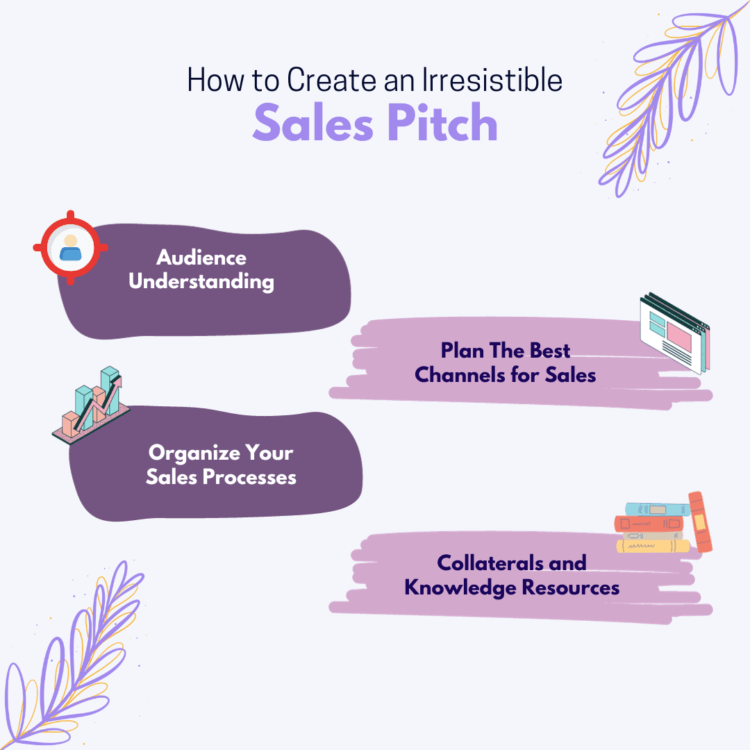1. Know Your Audience:
Understand your target audience’s needs, pain points, and preferences.
Create buyer personas to help tailor your pitch to specific customer segments.
2. Start with a Strong Opening:
Begin your pitch with a compelling hook or attention-grabbing statement.
Use a story, a surprising fact, or a thought-provoking question to engage your audience from the start.
3. Clearly Define Your Value Proposition:
Clearly articulate what your product or service does and how it solves a problem or fulfills a need.
Highlight the unique benefits and advantages your offering provides.
4. Build Credibility:
Share relevant success stories, case studies, testimonials, or certifications to establish your credibility.
Explain your expertise and why your solution is the best choice.
5. Address Pain Points:
Emphasize the specific pain points or challenges your audience faces and how your product/service alleviates them.
Connect emotionally with your audience by demonstrating empathy and understanding.
6. Highlight Features and Benefits:
Present the key features of your product or service and how they translate into benefits for the customer.
Focus on how these benefits can improve their lives or businesses.
7. Differentiate Yourself:
Explain what sets your offering apart from competitors.
Highlight unique selling points, such as quality, price, speed, or customer service.
8. Use Social Proof:
Share testimonials, reviews, or success stories from satisfied customers.
Mention any recognizable brands or organizations you’ve worked with.
9. Overcome Objections:
Anticipate common objections and address them proactively.
Provide persuasive rebuttals or solutions to any concerns your audience might have.
10. Create a Sense of Urgency:
Encourage your audience to act now by highlighting limited-time offers, promotions, or exclusive deals.
Use phrases like “act today” or “limited availability” to create a sense of urgency.
Make a Clear Call to Action (CTA):
Tell your audience exactly what you want them to do next. It could be to make a purchase, request a demo, subscribe, or contact you.
Use strong, action-oriented language in your CTA.
Keep it Concise:
Avoid overwhelming your audience with too much information. Keep your pitch concise and to the point.
Be mindful of your audience’s time and attention span.
Practice and Rehearse:
Practice your pitch until you can deliver it confidently and naturally.
Rehearse in front of a mirror, record yourself, or seek feedback from colleagues or mentors.
Tailor Your Pitch:
Customize your pitch for different audience segments, industries, or individuals when necessary.
Show that you’ve done your research and understand your prospect’s specific needs.
Listen and Adapt:
Pay attention to your audience’s reactions and feedback during your pitch.
Be prepared to adapt and address any questions or concerns that arise.
Follow Up:
After delivering your pitch, follow up with prospects to answer any remaining questions and provide additional information.
Creating an irresistible sales pitch requires practice, refinement, and a deep understanding of your audience. By applying these principles and continuously improving your approach, you can create pitches that resonate with potential customers and lead to successful sales conversions.










No Comments
Leave Comment